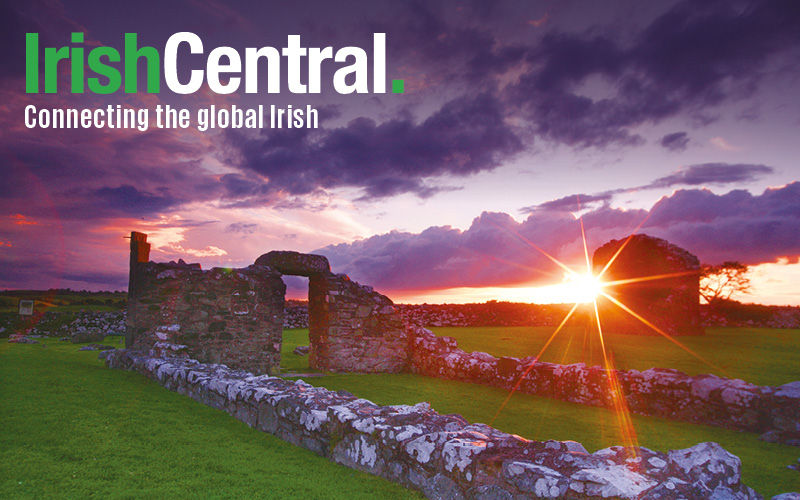This month marks the 50th anniversary of Northern Ireland’s first civil rights march.
Recently, an issue has arisen about who deserves credit for forming the civil rights movement.
On August 24, 1968, a nonviolent three-mile march protesting discrimination in the allocation of public housing began in Coalisland and finished in Dungannon, Co. Tyrone.
The march was organized by the non-sectarian Northern Ireland Civil Rights Association (NICRA). NICRA was modeled on the nonviolent U.S. civil rights movement. One of NICRA’s goals was the elimination of housing discrimination.
The march came two months after MP Austin Currie “squatted” in a house the Dungannon Rural Council had awarded to a single, childless nineteen-year-old employed by a Unionist politician.
Currie’s sit-in copied the direct action protest tactic used to integrate white-only lunch counters across the U.S. South. To maintain pressure on the government to institute housing allocation reforms, Currie and Dungannon Councillor Michael McLoughlin proposed a march.
Read more: How Martin Luther King inspired a Northern Ireland uprising

Martin Luthor King Jr.
The march followed another nonviolent direct action tactic employed by Dr. Martin Luther King, Jr. during what he called the U.S. civil rights “revolution.” Dr. King’s movement successfully transformed society by securing voting rights for African-Americans and re-shaping the South through the use of boycotts, sit-ins and marches.
The marches, in particular, transfixed the nation. Dr. King’s grassroots, nonviolent movement faced “physical force with soul force.” Ultimately, this led President John F. Kennedy to call the denial of equal rights a “moral issue” that America must confront, and resulted in passage of the Voting Rights Act.
As a mass demonstration of nonviolent protest, the Co. Tyrone march emulated civil rights marches in the U.S. To the extent the march was peaceful, it was a success. The march did not, however, lead to any changes in government policy.
Bernadette McAliskey (nee Devlin), who a year later became the youngest woman elected to the House of Commons, described a “holiday atmosphere” among marchers until they were blocked from entering Market Square in Dungannon by “a police cordon across the road.”
Many marchers were from Coalisland, which was considered to be a highly republican town. March organizers, fearing violence if continuation of the march was forced, decided it was over. Disappointed marchers sat in the road and sang rebel songs, like “A Nation Once Again,” for a few hours before dispersing.
The event’s peaceful conclusion could not have prepared anyone for what was to come next. It was Northern Ireland’s last bloodless civil rights march.
The next march protesting housing discrimination was in Derry on October 5, 1968. The Stormont government banned the Derry march. March organizers, nevertheless, went ahead in an act of civil disobedience targeting injustice.
The RUC blocked the parade route and broke-up the march by using water cannons and batons against protesters. Television news images of the police brutality were shown throughout the world.
It was a day of infamy for Northern Ireland. Northern Ireland would have many more during the civil rights era and throughout the Troubles.
Sinn Féin plans to hold a 50th anniversary march in Derry in October. The party claims its leadership, along with that of the IRA, had direct involvement “in the formation of the civil rights movement.”
Read more: The 50th anniversary of Northern Ireland's Civil Rights Movement and how it started

A peaceful process by the Northern Ireland Civil Rights Association (NICRA).
Sinn Féin MLA Declan Kearney says “the role of republicanism was central to the emergence of the civil rights movement along with many others.” McAliskey, a founding member of the People’s Democracy and civil rights leader, rebuked the claim as “delusional.”
Two things should be kept in mind as this debate plays out over the next few months. First, NICRA sought equal rights for all citizens and an end to unjust treatment. NICRA’s goals included enacting laws prohibiting discrimination in public housing and employment, redrawing electoral districts to reflect the number rather than the identity of voters, instituting a “one-man-one-vote” system, repealing the Special Powers Act and disbanding the Ulster Special Constabulary (B Specials).
The People’s Democracy organization, which was formed four days after the October 5, 1968, march in Derry, embraced the same goals. Neither civil rights group sought a united Ireland or independence from Great Britain.
Second, the Provisional IRA, which came into existence at the end of 1969 when they split from the socialist Official IRA, subscribed to the physical force tradition in Irish history. “Provo” philosophy justified the use of armed force to drive the British out Northern Ireland and gain a united Ireland. Thus, their means and ends differed from those of the nonviolent civil rights movement.
Their approach also ran directly counter to Dr. King’s philosophy of nonviolence to achieve justice and reconciliation. For Dr. King, nonviolent action was “a powerful and just weapon.” He referred to it as “the sword that heals” and brings about “the Beloved Community.”
As October approaches, look to see what substantive support is presented for Sinn Féin’s claim about the civil rights movement.
This article was submitted to the IrishCentral contributors network by a member of the global Irish community. To become an IrishCentral contributor click here.




Comments